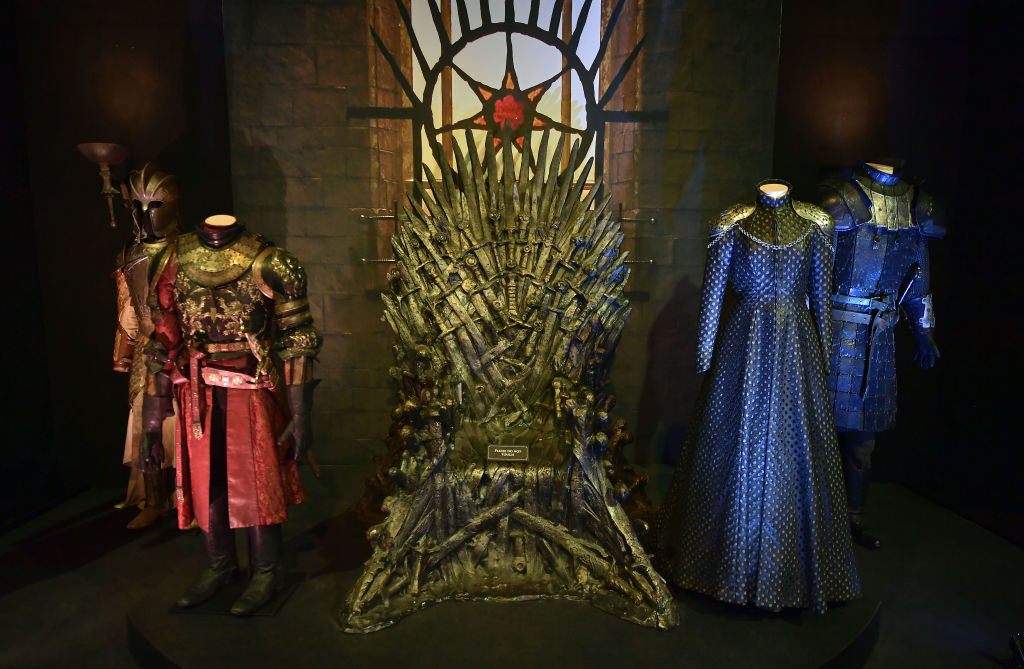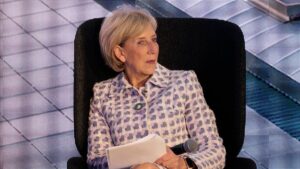Ground Breakers: Those Game of Thrones nickel jokes are looking REALLY dated now

Pic: Charles McQuillan/Getty Images)
- WA’s nickel ‘Game of Thrones’ fades as Indonesian supply kills prices
- Glencore says Murrin Murrin mine still and important part of its global nickel and copper business
- Iluka idles synthetic rutile plant as it waits for demand to turn
It became de rigueur for nickel fanatics and company executives to roll out Game of Thrones memes back in the early days of the metal’s short-lived electric vehicle renaissance.
The most recent iteration of the now dated reference (for more reasons than one) came in the Diggers and Dealers presentation of former Panoramic Resources (ASX:PAN) boss Victor Rajasooriar in August.
At the time the Savannah nickel mine owner was struggling to keep costs below falling nickel prices at its Savannah operations in WA’s Kimberley.
It eventually collapsed into administration, the closure of the mine by pen-pushers FTI in early January a harbinger of worse to come for the dilapidated sector.
Given George R.R. Martin’s penchant for offing beloved major characters in sudden and gratuitously violent deaths, the gallows humour may have been ill-advised.
Mine closures pile up
Forrest, as it transpires, will shut his own Kambalda operations — bought for $760 million from Mincor in July last year — with executives at his private mining house Wyloo bemoaning the rise of ‘polluting’ Chinese-backed Indonesian nickel into the battery nickel market which has flooded and (in a lesson that could well have been learnt not from high fantasy but from recent history) pushed down prices. Everyone seems to forget the White Walkers, but then they’re north of The Wall.
BHP (ASX:BHP) is reviewing its Nickel West operations, where a massive investment is needed to build a new nickel and copper mine in the remote West Musgrave region in the Ngaanyatjarra Lands acquired in its $9.6b takeover last year of OZ Minerals and extend the life of the Kalgoorlie Smelter.
Wyloo’s shutdown — which could see it return down the line with a concentrator of its own — will see BHP shut down part of its Kambalda processing plant. IGO (ASX:IGO) has already shut one mine picked up in its $1.3b takeover of Western Areas in 2022. And cost overruns at the Odysseus development alongside nickel prices halved since its acquisition have seen most of that value already written down. Ravensthorpe is doing Ravensthorpe things.
The forgotten house of the WA nickel space is the Murrin Murrin nickel laterite mine, originally promoted by Forrest at his failed Anaconda Nickel and owned for several years by Glencore. An early adopted of the HPAL technology now being used to turn ‘class 2’ nickel deposits in Indonesia into EV suppliers, it stands as the biggest standalone producer alongside BHP’s Mt Keith mine. Maintenance hurt output in 2023 — down 13% to 23,100t for the first nine months of 2023, with cobalt down 32% to 1500t.
That cobalt inventory is a key. Also hammered in 2023, cobalt was described by Macquarie nickel expert Jim Lennon as “the worst market” he’d seen. But Glencore is a major producer, it is a significant by-product credit and having a major Australian source of supply is good optics when much of the market — including Glencore’s — comes from the politically fraught DRC.
With the mayhem in WA’s nickel space — which will see Canberra send an embassy to Perth to talk through issues with local miners and the State Government on Thursday — we checked in with Glencore to see how that mine (where Glencore does not supply cost breakdowns) is tracking. A spokesperson says it remains an ‘important part’ of the mining giant’s business, where it has designs on splitting into separate coal and battery metals companies.
“Murrin Murrin is an important part of Glencore’s global nickel and cobalt portfolio,” they said. “Like other producers, we are focussing on maintaining a responsible and sustainable business in a challenging operating environment.
“Given the current market conditions, it is important for industry and state and federal governments to work together to ensure Australia can continue to produce metals like nickel and cobalt which are critical inputs for a range of industrial and household products.”
Battery metals nosedive to hit Australian resources earnings
Nickel exports earned ~$5 billion for Australian miners in 2022-23, and were expected by Canberra’s forecasters from the Department of Industry, Science and Resources to deliver $3.9b in FY24 and $4.2b in FY25, but projections that Aussie output will grow from 161,000t in 2023 to 195,000t in 2025 are now clearly under threat. Benchmark LME prices have fallen from over US$30,000/t at the start of 2023 to a little over US$16,000/t today.
A little under a year ago Canberra predicted Australia’s battery and base metals would be worth $54b by 2028, eclipsing the value to the nation of metallurgical and thermal coal. But a price dive has put the flagship battery metal lithium under the microscope as well — with Liontown Resources’ (ASX:LTR) revelation lenders including all the big banks had pulled support for a $760m loan to help expand its under construction Kathleen Valley mine the latest impact to land.
Lithium made ~$20b for Aussie miners in 2023 and as recently as December the Feds had spodumene concentrate averaging US$2200/t in 2025, with sales to rise from 3Mt in 2023 to 4Mt in 2025, pulling in $14b this financial year and $15b in 2025.
With spot prices of around US$900/t, that is now clearly challenged. Liontown said the decision to pull the funding and go back to lenders for a smaller debt package came after Wood Mackenzie edited its price deck, forecasting 6% Li2O lithium concentrate prices of US$950 from 2027-2029.
Liontown boss Tony Ottaviano yesterday indicated Liontown had a different perspective on lithium prices, noting that at those levels material WoodMac forecasts hitting the market will not arrive or be pulled by loss-making producers.
READ: Something must give as “unsustainable prices” hit energy transition metals: Chalice
And now for something completely (well a little bit) different
Iluka Resources (ASX:ILU) joined a bunch of coal miners on the reporting season bill today, revealing it would keep its SR1 synthetic rutile plant idled throughout 2024 after an initial four months outage.
While the SR2 plant will restart this month, it comes amid slower sales in the pigment and welding markets globally that use titanium dioxide feedstocks.
Iluka says prices remain strong for its zircon, rutile and synthetic rutile products but concerns over the Chinese and European property market and factory closures are hanging over zircon demand.
“Despite challenging market conditions and reflecting Iluka’s focus on delivering sustainable value, the company’s full year weighted average zircon premium and standard price was up 6% on 2022,” the company said.
“Customers continued to demonstrate a degree of caution, reflecting both broad based global economic uncertainty and general weakness in key markets. In China, policymakers have made several announcements aimed at stimulating demand in the real estate market and encouraging consumer spending.
“While there are signs these policies are stabilising the real estate market and creating more favourable financial market conditions for economic growth, there is yet to be an increase in zircon consumption, which would be expected to lead to some re-stocking on top of underlying demand.
“European demand slowed towards the end of Q4, coinciding with regular seasonal factory closures; and customers ended the quarter with lower zircon inventory. In the US, industrial production remained stable, with the overall economy in expansion.”
Iluka saw zircon sand and zircon in concentrate output rise 13.5% and 0.2% respectively in 2023 to 239,500t and 87,500t, with rutile output down 4.4% to 52,700t and synthetic rutile production up 9.2% to 259,500t.
But its sales volumes for all products fell 22% across the board from 633,100t in 2022 to 494,000t in 2023 for zircon, rutile and synthetic rutile and 16.8% from 178,800t to 148,800t for ilmenite, with revenues down 19.2% to $1.238b and cash costs up 18.3% to $616/t.
An update on a new rare earths refinery Iluka is building at Eneabba on WA’s Mid-West coast is due at the end of March after the company revealed last year that the capital bill for the $1.2 billion plant — funded with the help of a $1.25b loan from the Federal Government — would cost between $1.5-1.8b. Processing rare earth oxides from a waste rock stockpiled at Eneabba called monazite, it is expected to be commissioned in 2026.
Iluka Resources (ASX:ILU) share price today
Related Topics

UNLOCK INSIGHTS
Discover the untold stories of emerging ASX stocks.
Daily news and expert analysis, it's free to subscribe.
By proceeding, you confirm you understand that we handle personal information in accordance with our Privacy Policy.








